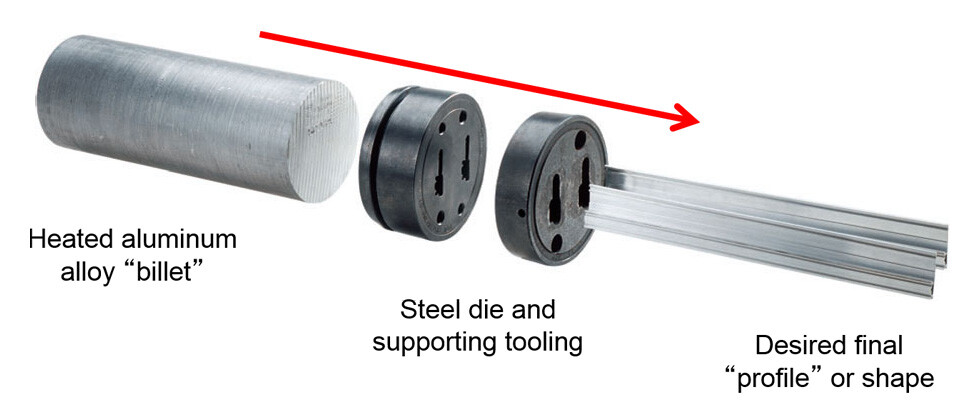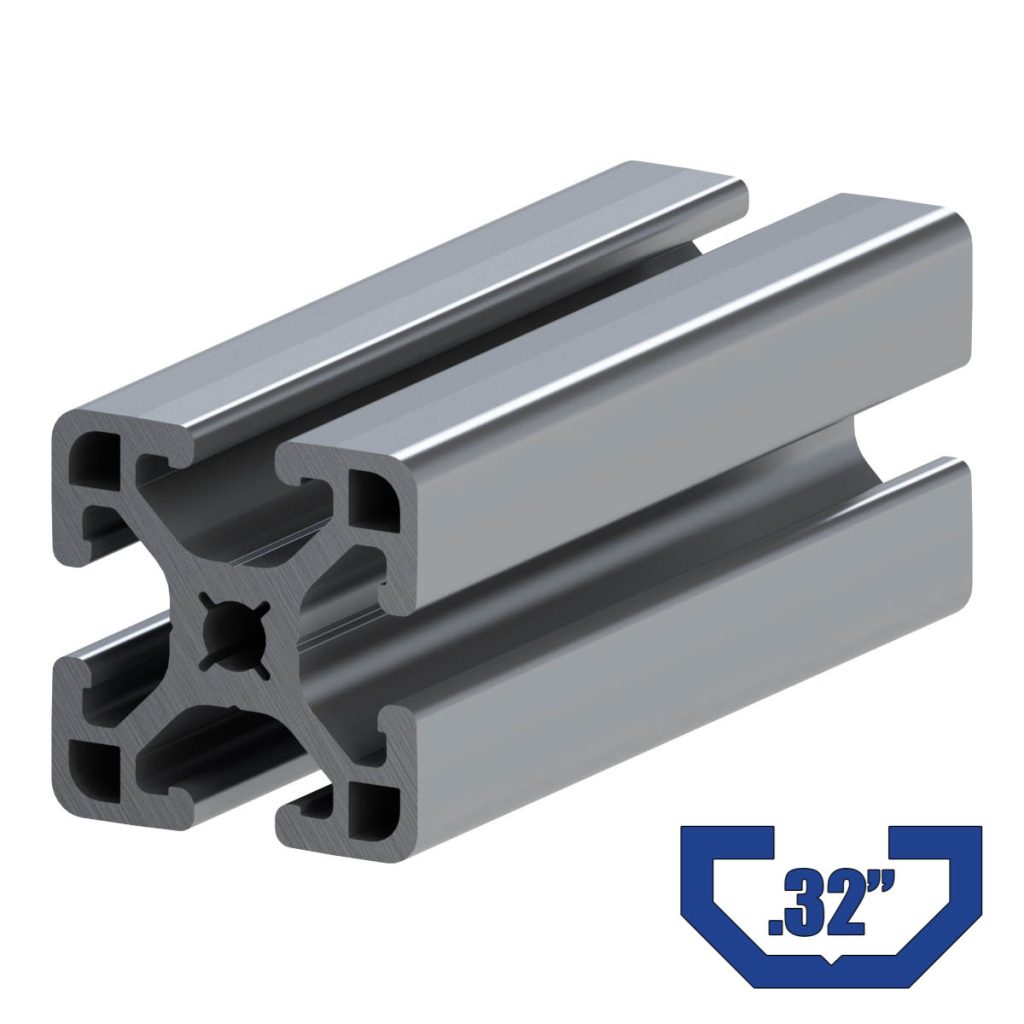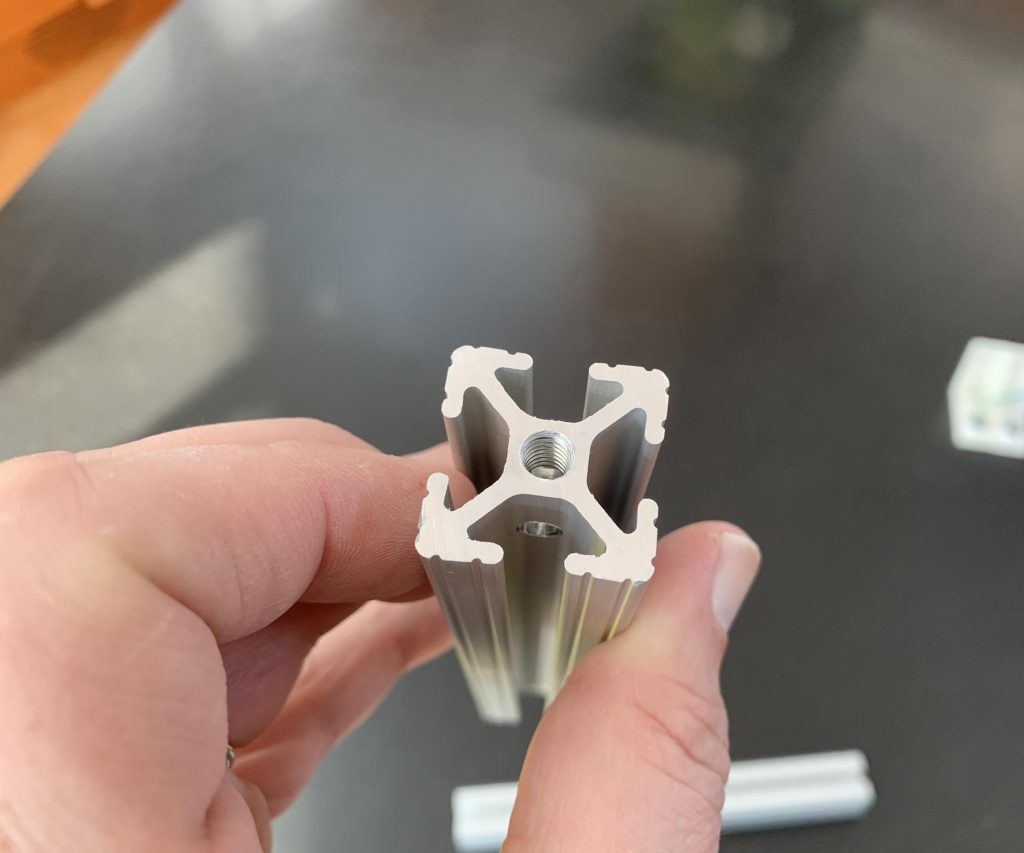Table of Contents
Extruded aluminum is a popular material used in various industries, from construction to automotive. One of the most common questions about extruded aluminum is how flat it can be. This is a crucial consideration, especially in applications that require precision and accuracy.
The answer to this question is not straightforward. While extruded aluminum can be relatively flat, it is not perfectly flat. There are various factors that affect the flatness of extruded aluminum, such as the alloy used, the extrusion process, and the post-processing techniques. In this article, we will explore these factors and discuss how they affect the flatness of extruded aluminum.
Extruded aluminum is typically very flat, with variations in flatness of less than 0.005 inches per linear foot. This is due to the extrusion process, which uses a die to shape the aluminum while it is still in a malleable state. The result is a highly precise and consistent product that is ideal for a variety of applications.
How Flat is Extruded Aluminum?
Extruded aluminum is a popular material used in a variety of industries, including construction, automotive, and aerospace. The material is known for its durability, light weight, and versatility. One important aspect of extruded aluminum is its flatness. In this article, we will explore how flat extruded aluminum can be, and what factors affect its flatness.
What is Extruded Aluminum?
Extruded aluminum is a type of metal that is formed by forcing it through a die at high pressure. The process creates a long, uniform shape that can be cut to any length. Extruded aluminum is used in a variety of applications, including window frames, door frames, and structural supports.
Factors Affecting Extruded Aluminum Flatness
Several factors can affect the flatness of extruded aluminum. One of the most important factors is the die used in the extrusion process. If the die is not perfectly flat, it can cause the aluminum to be uneven. Another factor is the temperature of the aluminum during the extrusion process. If the temperature is too high or too low, it can cause the aluminum to warp or bow.
Benefits of Flat Extruded Aluminum
Flatness is an important quality in extruded aluminum because it affects the material’s overall strength and stability. Flat aluminum is easier to work with and provides a uniform base for attaching other components. It also reduces the risk of leaks and other issues that can occur when working with uneven surfaces.
How Flat Can Extruded Aluminum Be?
Extruded aluminum can be made very flat, depending on the specific requirements of the application. Generally, the flatness tolerance for extruded aluminum is around 0.005 inches per foot. However, some applications may require even greater flatness tolerance.
Types of Extruded Aluminum
There are several types of extruded aluminum, each with its own unique properties and flatness characteristics. Some of the most common types include 6061, 6063, and 7075. Each type has a different composition and is suited for different applications.
Extruded Aluminum vs Rolled Aluminum
Extruded aluminum and rolled aluminum are two common forms of aluminum used in manufacturing. While both are used in a variety of applications, extruded aluminum is generally considered to be more flat and uniform. Rolled aluminum is often used for more decorative applications where flatness is not as important.
Conclusion
In conclusion, extruded aluminum can be made very flat depending on the specific requirements of the application. A variety of factors can affect its flatness, including the die used in the extrusion process and the temperature of the aluminum. Flatness is an important quality in extruded aluminum because it affects the material’s overall strength and stability. By understanding the factors that affect aluminum flatness, manufacturers can produce high-quality extruded aluminum products that meet the requirements of their customers.
Frequently Asked Questions
How Flat is Extruded Aluminum?
Extruded aluminum is known for its flatness, which is one of the reasons why it is such a popular material in a variety of industries. The flatness of extruded aluminum is typically measured in terms of its tolerances. Tolerances are the allowable deviations from the nominal dimensions of a part or component, and they are expressed in thousandths of an inch or in millimeters.
The flatness tolerance of extruded aluminum depends on a variety of factors, including the alloy used, the extrusion process itself, and the post-extrusion processes such as heat treatment and machining. Generally speaking, extruded aluminum can be produced to very tight tolerances, especially for critical applications such as aerospace and automotive components.
What Factors Affect the Flatness of Extruded Aluminum?
As mentioned earlier, several factors can affect the flatness of extruded aluminum, including the alloy used, the extrusion process, and post-extrusion processes. The alloy used can have a significant impact on the flatness of the final product. Some alloys are naturally more ductile and can be extruded to tighter tolerances than others.
The extrusion process itself also plays a crucial role in determining the flatness of the final product. Factors such as die design, extrusion speed, and temperature control all influence the flatness of the extruded aluminum. Additionally, post-extrusion processes such as heat treatment and machining can also affect the flatness of the final product.
What are the Benefits of Using Extruded Aluminum in Manufacturing?
Extruded aluminum is a highly versatile material that offers numerous benefits in manufacturing. One of the main advantages of extruded aluminum is its excellent strength-to-weight ratio. It is also highly resistant to corrosion, making it an ideal material for use in harsh environments.
Extruded aluminum can also be produced in a wide range of shapes and sizes, making it suitable for a variety of applications. Furthermore, it is easy to machine and can be finished in a variety of ways, making it a cost-effective option for many manufacturing processes.
What Industries Use Extruded Aluminum?
Extruded aluminum is used in a wide range of industries, including aerospace, automotive, construction, electronics, and consumer goods. In the aerospace industry, it is used to manufacture critical components such as aircraft frames, landing gear, and engine components.
In the automotive industry, extruded aluminum is used to manufacture components such as engine blocks, suspension components, and body panels. In the construction industry, it is used to manufacture curtain walls, window frames, and roofing systems. It is also used extensively in the electronics industry to manufacture heat sinks and other components.
How Do You Choose the Right Extruded Aluminum Product?
Choosing the right extruded aluminum product depends on several factors, including the application, the required tolerances, and the desired finish. It is important to consider the specific requirements of your application and to select a product that meets those requirements.
You should also consider the material properties of the extruded aluminum, such as its strength, corrosion resistance, and machinability. Additionally, you should consider the cost and availability of the product, as well as any post-extrusion processes that may be required.
In conclusion, the flatness of extruded aluminum is a crucial factor for various industries that rely on this material. The manufacturing process of extruded aluminum involves stretching the material through a die, which can cause varying degrees of flatness. While it is impossible to achieve a perfectly flat surface, modern technology and techniques have significantly improved the flatness of extruded aluminum.
Moreover, the use of specialized equipment and quality control measures ensures that the final product meets the required flatness standards. It is also essential to note that the level of flatness required for different applications varies. For instance, the construction industry may require a different level of flatness compared to the electronics industry.
In conclusion, the flatness of extruded aluminum is a complex but essential aspect that manufacturers and end-users should consider. With advancements in technology, it is possible to achieve high levels of flatness, making extruded aluminum a versatile material for various industries.
Request a quote today!
[contact-form-7 id="1578" title="Contact form"]
Please compress the file into a ZIP or RAR file before uploading. Alternatively, send through your RFQ by email.
enquires@unitymanufacture.com





